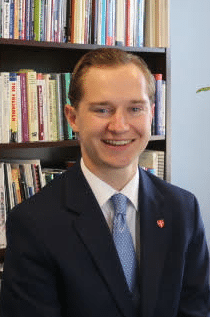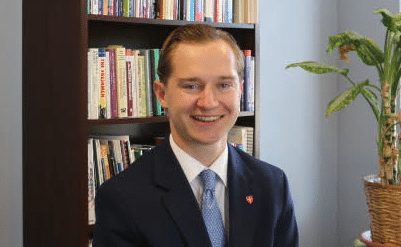
Brendan Klein, AYPF Policy Research Intern
Every year the clamor gets louder and louder from teachers, parents, and legislators. “We need afterschool!” Yet despite the recognition of the communal desire for afterschool programming, many children continue to go unserved. Nowhere is this truer than in rural communities.
According to a 2016 Afterschool Alliance report on rural youth entitled: America After 3 PM , for every rural child enrolled in afterschool, three were willing and unable to join a program. Rural parents in particular are overwhelmingly supportive of public funding for afterschool programs, citing job security and peace of mind as key reasons for afterschool in their community. While the demand is clearly documented, only 13 percent of rural youth participate in afterschool programming.
Afterschool is not just a place to keep kids until their parents get off work; it is a place where learning and growth continues. A publication by Partnership for 21st Century Learning states that children only spend 20 percent of their time in the classroom, highlighting the importance of making educational inroads during children’s out-of-school time. This is recognized in the significant push from education experts to incorporate more youth development curricula and practices in afterschool programs to increase student competency. This campaign has taken shape in the form of various college and career readiness opportunities. Such opportunities allow students to gain employability skills that businesses desire such as STEM exposure, social and emotional learning, teamwork, and internships. Many college and career readiness-themed afterschool programs have thrived in resource-rich urban communities where businesses and higher education institutions are present, allowing students to enhance their ability to gain college admission after high school. Programs like After School Matters in Chicago, IL, where 66% of their participants continue on to college, offer amazing apprenticeship/internship opportunities for students. The same cannot be said for rural youth who grow up in business-sparse communities.
Rural afterschool has struggled to grow due to a multitude of challenges. First, most rural afterschool programs take place at public schools, according to an America After 3PM survey. In order to operate a program, money and labor must be available. Though rural schools have the potential labor through teachers and education providers, the money is little to nonexistent. This is because school districts are typically funded through property taxes and state funds, with an assortment of federal grants. Usually, state funds provide the base for all districts, with the local taxes providing the extra icing on top. The problem that rural communities face is that they have less “icing” than suburban and urban areas, making afterschool an accessory, not a necessity.
Let’s look at my home state of Minnesota as an example of rural-urban disparity. When I was a student in the public school system (a suburban school), I received $10,771 student dollars in funding according to an NPR and Education Week study, $3,000 less than my Minneapolis counterparts. Yet in rural communities, I would either have received $3,000 more dollars, or $3,000 less. Why such great disparity? High per pupil funding can be misleading since some schools have lower student to teacher ratios, which means a teacher making $60,000 a year, teaching 20 kids, will appear as a greater amount of funds per pupil than say, a teacher making the same amount, but teaching 30 kids. One is worth $3,000 per student, the other $2,000, even though the students are receiving the same resource, a teacher. The mathematics of denominators does not account for all differences, but it could explain some. Where disparities are definitely found is in the amount and variety of out-of-school time opportunities for youth.
Greater community investment is often needed for extra programming to occur. I recall doing fundraisers and bake sales to raise money for my extracurricular activities like Speech & Debate and Tennis. My community was full of business sponsors and wealthy families that could donate. Many rural communities cannot say the same. The lack of large businesses and chambers of commerce in rural areas, as well as acute poverty and state budget cuts, makes funding for afterschool programs, especially those that want to focus on workforce development programs, much more challenging.
Finally, logistical challenges are unavoidable for many rural afterschool programs. Urban areas often have better public transportation and population density, making school districts more compact. Rural school districts tend to be much larger and dispersed. An urban school bus can take 300 kids and spend less on gas since most of the children live geographically near each other. A rural school bus could take the same amount of kids, but cover a much larger distance due to less population density.
While the outlook may appear bleak for rural communities, there is hope. One example of a successful afterschool program is Platina Elementary School in California, which has continued to serve its students despite the lack of funds and small student body. A 2015 Ed Source article highlighted this program and many other rural schools to identify their struggles and triumphs. The only reason these afterschool programs survive, the article cites, is because of community human investment, such as volunteering and role-sharing.
Rural communities, like all communities, depend on community investment and sacrifice in order to succeed. For example, many rural schools have principals who serve as the bus driver and afterschool instructor. Thankfully, these local programs are receiving national support. National programs like 4-H, that serve almost 3 million rural youth, have spent over a century working with rural locations and providing them opportunities to enhance their children’s college and career readiness. State programs have taken initiative too, such as OregonASK, which advocates for and assists in STEM afterschool education across the state.
Finally, states are utilizing federal funds to assist rural communities. Funds from the 21st Century Community Learning Centers program are available to rural communities and enhance their educational opportunities. Many State Afterschool Networks are focusing on rural needs, advocating for better funding and support in state legislatures for things like transit grants.
Rural communities and children deserve the same opportunity that oftentimes their urban and suburban peers receive. Simply because their challenges are more complex does not mean that they should not be addressed. To use a farm phrase, we reap what we sow, which means that if the ultimate goal is a competent, prepared workforce for the 21st century; we must assist rural communities in harvesting their untapped potential.


